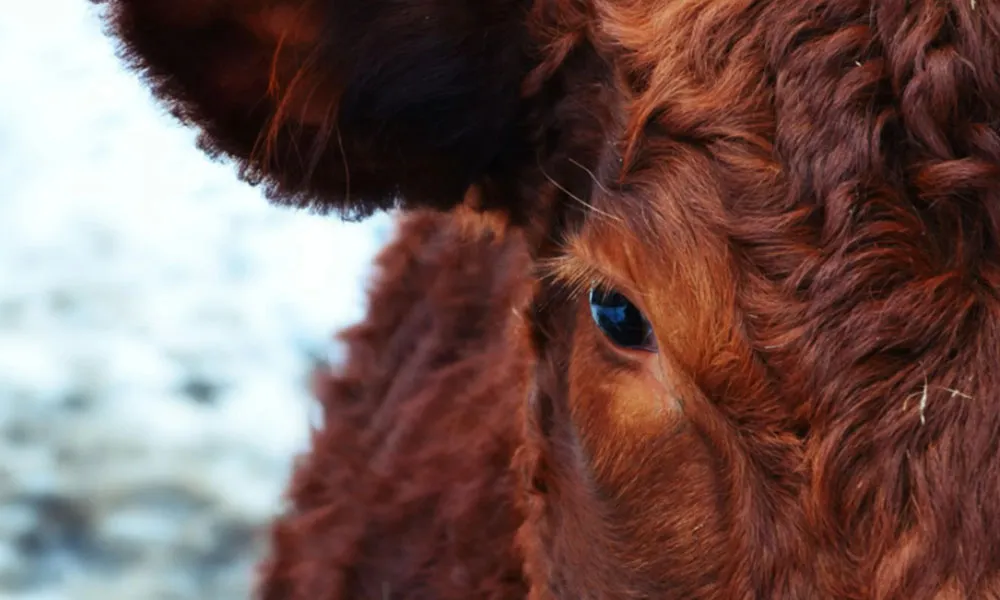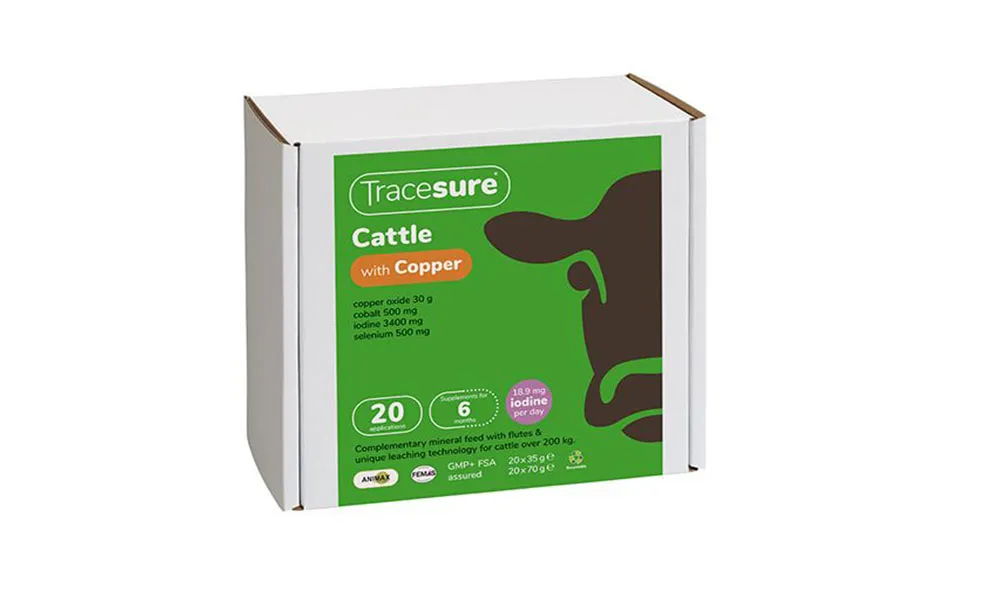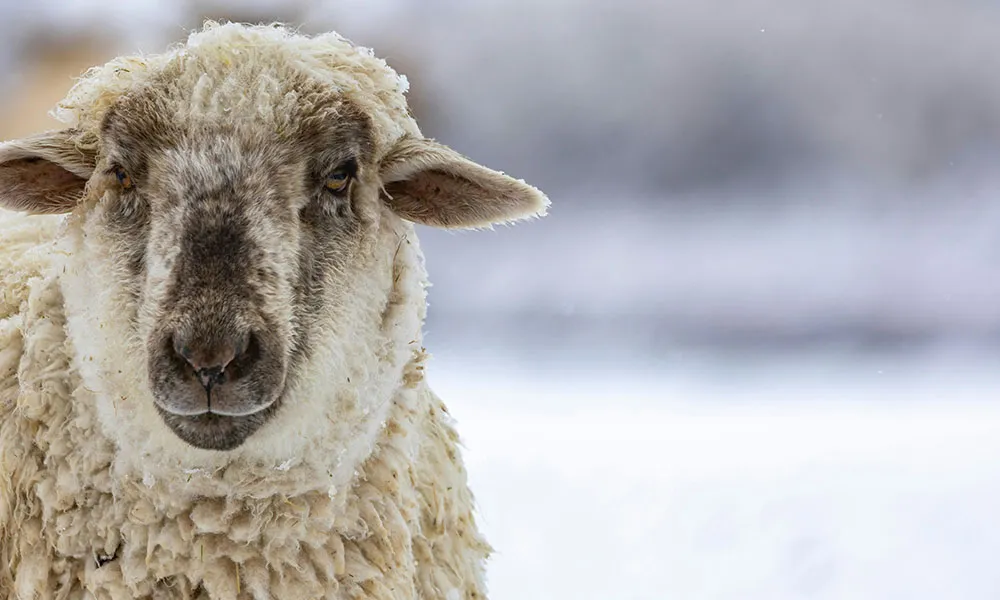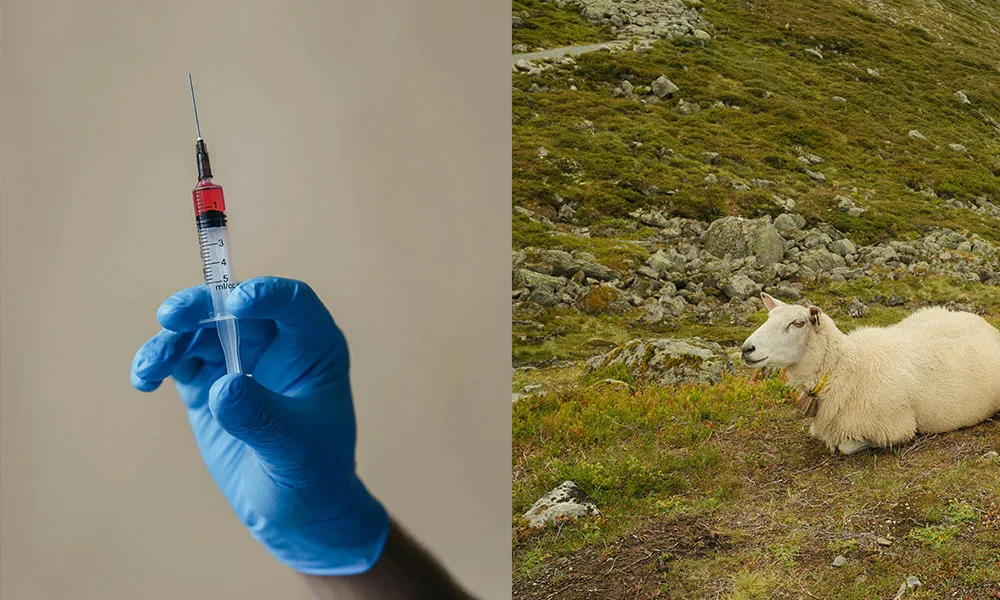
Deficiencies
Mineral and trace element deficiencies are among the most common causes of animal disease on Irish farms. Apart from having direct consequences on the animal’s physical health, deficiencies make livestock more vulnerable to a range of other conditions (such as parasitic infections). With winter on the horizon, farmers should consider the mineral status of their herd and take appropriate action if necessary.
Copper deficiency
In my experience, copper deficiency is a particular problem during winter and early spring. This condition can be caused directly, by a mineral deficiency on pastureland and in feed. This, however, is relatively rare. Far more common, in my view, is secondary copper deficiency. Research indicates that a secondary copper deficiency occurs due to an imbalance of other minerals in the rumen (such as iron, sulphur and – frequently – molybdenum). These substances, when acting together, can compromise the animal’s ability to absorb copper, leading to deficiency.
Signs and symptoms
Copper deficiency is not always easy to identify, and can often resemble a parasitic infection. However, the deficiency does have some telltale symptoms that the astute farmer will recognise. Affected animals often have a very thin coat, due to hair loss. Discolouration of the coat, particularly around edges of eyes and ears is also widely attested; as is diarrhoea and anaemia (particularly in extreme cases). Animals suffering from a copper deficiency may also walk with a pronounced limp.
Arguably the most devastating aspect of copper deficiency is its impact on fertility. In heifers, this may manifest as a failure to come onto heat or hold to the bull. At any rate, lower conception rates are observable in herds with a copper deficiency, particularly those with a secondary deficiency due to problematic molybdenum, iron or sulphur intake.
Treatment and prevention
Here at Agridirect.ie, we always encourage farmers to take preventative measures because, in most cases, some harm has already done by the time an animal needs to be treated for disease. Fortunately, there are numerous copper supplements available on the market. These are usually reasonably priced and easy to administer. As with most supplements, farmers can choose either a bolus option or a drench option. In my experience, the bolus is the more effective approach because it uses a slow-release technology. However, drenches tend to be considerably cheaper and this, in the current economic climate, may be decisive for some.
Whatever treatment/preventative measure you decide on, your choice should be informed by careful consideration of the situation on your farm (i.e. the type of stock that you are treating).
Tracesure Cattle with Copper
When it comes to bolusing for copper deficiency, I am a huge fan of Tracesure’s Cattle with Copper bolus. This supplement is entirely organic and provides a slow release of copper for a period of up to six months post application. More than just providing for all the animal’s copper supplementation needs, Tracesure Cattle also provides a much-needed release of cobalt, iodine and selenium for overall health maintenance. This makes it a particularly strong choice for younger cattle, either at point of winter housing or spring turnout.
A version of the same product is available for calves (Tracesure Calf with Copper).
Drenches
In terms of drenches, there are several excellent options that will help you provide for your herd’s copper intake needs. Among these, I particularly like Growvite Forte (which is chock-full of vitamins and trace elements), and Stockline with Copper (which is very reasonably priced and is fortified with Omega-3 oils).
Mineral buckets
A lot of farmers ask us about the benefits of placing a mineral bucket in the field or feeding pen with stock. Our answer to this is always the same – mineral buckets are a great tool in the arsenal when it comes to preventing deficiency, but don’t put all of your proverbial eggs in that one bucket! If animals develop a taste for the lick and are inclined to use it, they should be safe from serious deficiency. The problem, of course, is that you can never be sure that all of your animals will take to it. In my experience, there is always one or two that never get the hang of it and, in such cases, a bolus or a drench is the only way.
All that being said, if you want to go down the mineral bucket route, I would highly recommend Mixrite Copper 5-a-day.











